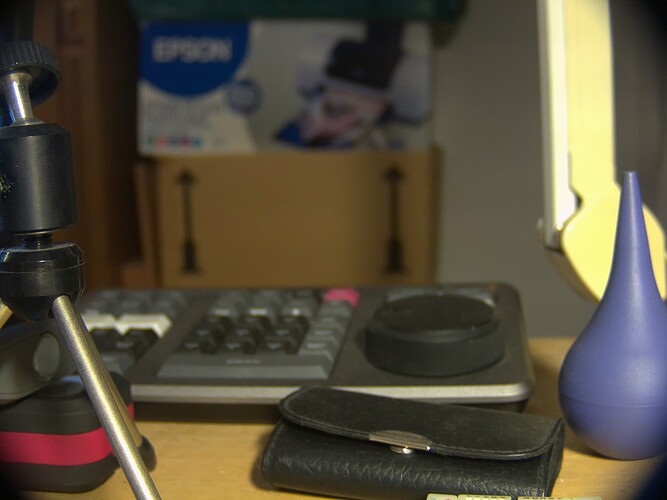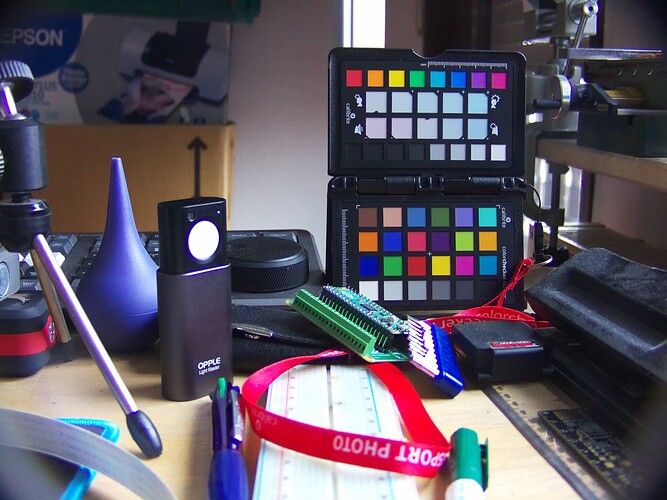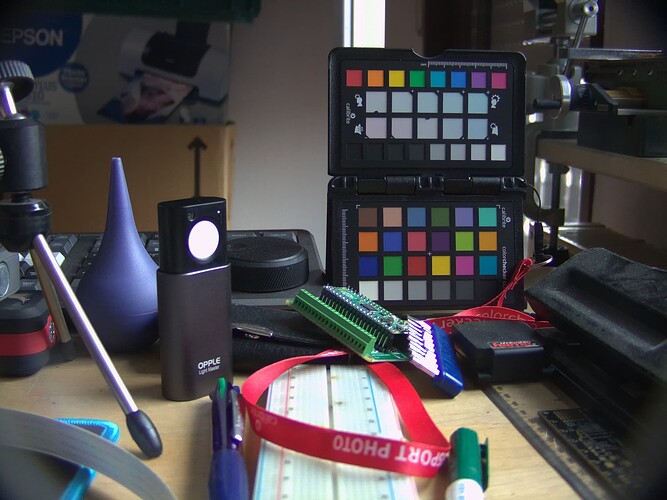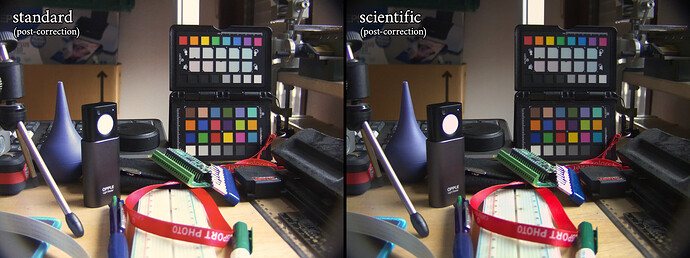I found a little bit more information on this. It seems that in “Single Exposure” mode some sort of temporal denoising algorithm is employed. The exposure for each image is reduced, so the highlights of the source are correctly recorded. But of course, that gives you quite some noise in dark areas. Here the RP5 employs a temporal noise-reduction process, averaging over several consecutive frames. Averaging is skipped when the pixel’s value differs too much from the previous frame.
According to statements from the RP-team, that works well in video mode. You do not get a reduction in frame rate, but dark noisy areas have much less noise than the raw imagery, and because the images are exposed towards the highlights, they also do not burn out. You will get some artifacts around fast moving edges and in highly textured areas.
The resulting temporal denoised image is than tone-mapped (no information on this, maybe histogram-equalized?) to the final output image.
The “Multi-Exposure” thing is more similar to the classical way of acquiring HDR imagery – they really take several exposures of a scene one after the other and combine them into a HDR image (how this is done is unknown currently, but I suspect it’s not as complicated as Mertens). In any case, you will encounter a reduction in frame rate in this mode. Therefore, the mode is recommended by the RP guys only for still images. Again, some sort of – yet unpublished – tonemapping is applied to the HDR image to arrive at the normal LDR (8 bit per channel) image.
@dgalland - the .dng-encoding on the RP5 still takes about 1 sec/frame? I measure about 980 ms on my RP4 for writing the raw data as .dng-file to an SSD…




